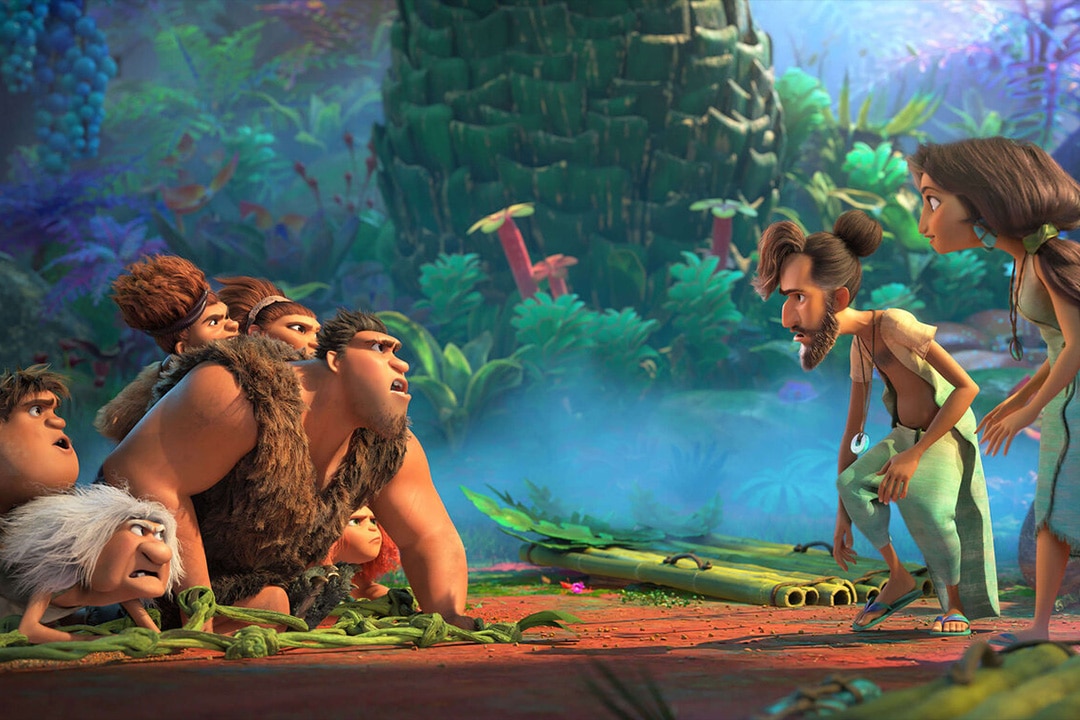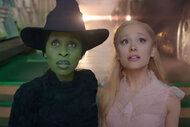Create a free profile to get unlimited access to exclusive videos, sweepstakes, and more!
You might have some memory of ancient ape sign language
Did you know you spoke ape?

The Croods: Family Tree (streaming now on Peacock!) continues the story of the titular Croods and their semi-familiar ancient world. It opens on a family of cave people living during a fictional part of the Pliocene, a period from 5.4 to 2.4 million years ago. In the real world, that’s right around when the world was walked by Ardipithecus (potentially one of the earliest splits between humans and chimpanzees) and later Australopithecus and Homo habilis. Our own species, Homo sapiens, wouldn’t arise for a couple million years more.
The Pliocene was a period of intense primate diversification following our ancestral split from the other great apes. It’s believed that our last common ancestor with the chimpanzee lived between 4 and 6 million years ago, and our split with gorillas happened a few million years earlier. Despite the massive chronological gap between us and the rest of the living great apes, new research suggests we might retain some instinctual memory of the language we used before we could speak. That’s according to a new study by Kirsty E. Graham and Catherine Hobaiter from the Wild Minds Lab at the University of St. Andrews in Scotland, published in the journal PLOS One.
RELATED: Chimpanzees communicate while hunting, which could reveal how language evolved in humans
It's well understood that chimpanzees, bonobos, gorillas, and the other apes use gestures to communicate non-verbally among one another. To date, more than 80 distinct gestures have been identified among non-human apes. Interestingly, scientists have found that many of the gestures appear to be nearly universal, existing among multiple ape species. But not humans.
Their shared presence among all of our other close relatives suggests that a gestural language emerged within the ancient primate ancestor we all share and that it has been retained in every ape species, save our own. Somewhere along the way to controlled fire and high speed internet, we lost the non-vocal gestures which dominate primate communication in favor of spoken language. But researchers wondered if, even though we don’t’ use that language anymore, we might retain some ancestral memory of what the gestures mean.
Prior attempts focused on identifying uses of ape gestures among humans, something which is complicated by the wide array of gestures we use while speaking. So, Graham and Hobaiter flipped the experimental design on its head. Instead of looking for humans generating the gestures, they focused on whether they could interpret the meaning of non-human apes.
To find out, they crowdsourced data from more than 5,600 people through an online game. Researchers selected the 10 most common gestures used by chimpanzees and bonobos and played videos of their use, then asked the participants to choose from four possible meanings.
RELATED: Our primate ancestors may have learned to walk while still in the treetops
If we retained no innate understanding of the gestures, you would expect participant accuracy to fall in line with chance. They’d guess the right answer through pure luck about a quarter of the time. Instead, the participants correctly interpreted the gestures’ meaning more than half of the time. It seems that we’re not fluent in chimp, but we might be able to get by in a pinch. It’s also worth noting that when participants were given context about what the apes were doing before and during the gesture, their accuracy only improved a tiny bit, hardly at all. That suggests the meaning is in the gesture itself, or at least that any other contextual information is lost on us.
The findings suggest one of two possibilities. The more mundane of the two is that we’re able to guess not because of some mental holdover from the deep past, but because humans and the other great apes still share a great deal of biological and social hardware. The other, more exciting possibility is that we and the other apes did once have a shared language and even after millions of years of evolutionary and social separation, some of that language remains. We’re all about half fluent in chimpanzee, make sure to update your resume.
Settle in for a few episodes of The Croods: Family Tree (now streaming on Peacock) while you’re waiting for the next gestural missive from your chimp cousins.















